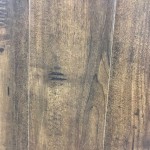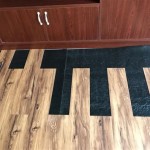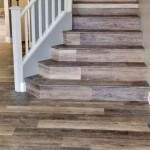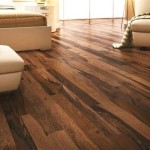Types of Wood Flooring for Kitchens: A Comprehensive Guide
Selecting the appropriate flooring for a kitchen presents a unique set of challenges. The kitchen, often the heart of the home, is subject to high foot traffic, spills, varying temperatures, and humidity. Consequently, the choice of flooring material must balance aesthetic appeal with durability, ease of maintenance, and resistance to common kitchen hazards. Wood flooring, valued for its warmth, elegance, and timeless appeal, can be a viable option for kitchens, provided the right type of wood and finish are selected. This article explores various wood flooring options suitable for kitchens, outlining their characteristics, advantages, and disadvantages to aid informed decision-making.
Wood flooring encompasses a broad spectrum of materials, ranging from solid hardwood to engineered wood, and various species of wood with differing hardness, grain patterns, and moisture resistance. Understanding these distinctions is crucial to selecting a wood flooring that can withstand the demands of a kitchen environment. Additionally, particular attention must be paid to the finish applied to the wood, as this is a primary factor in protecting the floor from water damage and wear.
Solid Hardwood Flooring
Solid hardwood flooring consists of planks milled from a single piece of wood. This type of flooring is renowned for its durability and longevity, often lasting for generations if properly maintained. Solid hardwood can be sanded and refinished multiple times, allowing homeowners to refresh the appearance of the floor or repair damage. However, solid hardwood is susceptible to moisture fluctuations, which can cause it to expand and contract, potentially leading to warping, cupping, or gapping. Therefore, solid hardwood is generally not recommended for kitchens that are prone to high humidity or frequent spills.
Certain species of solid hardwood are more suitable for kitchens than others. Oak, maple, and hickory are popular choices due to their hardness and resistance to wear and tear. The Janka hardness scale measures the relative hardness of different wood species. A higher Janka rating indicates a harder wood that is less likely to dent or scratch. Oak, maple, and hickory generally have higher Janka ratings compared to softer woods like pine or cherry.
When considering solid hardwood for a kitchen, it is essential to ensure proper subfloor preparation and installation. The subfloor must be level, dry, and free from any imperfections that could compromise the integrity of the flooring. A moisture barrier should be installed between the subfloor and the hardwood to prevent moisture from seeping into the wood. Furthermore, it is crucial to select a durable finish that can withstand spills and stains. Polyurethane finishes are a common choice for hardwood floors in kitchens due to their water resistance and durability. However, regular maintenance, including sweeping, vacuuming, and periodic cleaning with a wood floor cleaner, is necessary to preserve the appearance and longevity of solid hardwood flooring in a kitchen.
Engineered Wood Flooring
Engineered wood flooring is constructed from multiple layers of wood veneer bonded together, with a top layer of hardwood. This construction provides greater stability and resistance to moisture compared to solid hardwood. Engineered wood flooring is less prone to expansion and contraction, making it a more suitable option for kitchens where moisture levels may fluctuate. It can be installed in areas where solid hardwood is not recommended, such as basements or over concrete slabs.
The thickness of the top hardwood veneer layer determines the lifespan and ability to refinish engineered wood flooring. Thicker veneer layers can be sanded and refinished multiple times, while thinner layers may only allow for one or two refinishing attempts, or none at all. The core layer of engineered wood flooring is typically made from plywood, hardwood, or high-density fiberboard (HDF). The type of core material affects the overall stability and moisture resistance of the flooring. Plywood cores generally offer better moisture resistance than HDF cores.
Engineered wood flooring offers a wide range of styles, colors, and finishes. It can mimic the appearance of solid hardwood at a lower cost. Installation methods for engineered wood flooring include glue-down, nail-down, and floating installations. Floating installations are particularly popular for DIY projects due to their ease of installation. However, it is important to follow the manufacturer's instructions carefully to ensure proper installation and avoid potential problems, such as buckling or gapping.
Similar to solid hardwood, selecting a durable finish is crucial for engineered wood flooring in a kitchen. Polyurethane finishes are commonly used, but other options, such as aluminum oxide finishes, offer enhanced scratch resistance. Regular maintenance, including sweeping, vacuuming, and cleaning with a wood floor cleaner designed for engineered wood, is necessary to maintain the appearance and longevity of the flooring.
Wood-Look Alternatives: Luxury Vinyl Plank (LVP)
While technically not wood flooring, Luxury Vinyl Plank (LVP) is a popular alternative that effectively replicates the look of wood, offering superior water resistance and durability for kitchen environments. LVP is a synthetic material composed of multiple layers, including a wear layer, a decorative layer, and a core layer. The decorative layer is printed with a high-resolution image of wood, creating a realistic wood-look appearance.
The wear layer is the top layer of LVP, providing protection against scratches, scuffs, and stains. The thickness of the wear layer is a critical factor in determining the durability of the flooring. Thicker wear layers offer greater protection and are more suitable for high-traffic areas like kitchens. LVP is available in a variety of thicknesses, ranging from 6 mil to 20 mil or more. A wear layer of 12 mil or higher is generally recommended for kitchens.
LVP is highly resistant to water damage, making it an excellent choice for kitchens where spills and splashes are common. It is also relatively easy to clean and maintain, requiring only regular sweeping, vacuuming, and occasional mopping with a damp mop. LVP is available in a wide range of styles, colors, and textures, allowing homeowners to achieve the desired aesthetic without the maintenance concerns associated with natural wood flooring.
Installation methods for LVP include glue-down, click-lock, and loose-lay installations. Click-lock installations are particularly popular for DIY projects due to their ease of installation. LVP can be installed over a variety of subfloors, including concrete, plywood, and existing tile floors. However, it is important to ensure that the subfloor is level, dry, and free from any imperfections that could telegraph through the LVP.
Key Considerations for Selecting Wood Flooring for Kitchens
Selecting the appropriate wood flooring for a kitchen requires careful consideration of several factors, including species, finish, installation method, and maintenance requirements. By carefully weighing these factors, homeowners can choose a wood flooring that not only enhances the aesthetic appeal of their kitchen but also provides lasting durability and performance.
Species Hardness: Opt for hardwood species with a high Janka hardness rating to resist dents and scratches. Oak, maple, hickory, and ash are generally good choices. Softer woods like pine and fir are less suitable for high-traffic areas like kitchens.
Finish Durability: Choose a durable finish that offers water resistance and protection against scratches and stains. Polyurethane finishes are a common choice, but aluminum oxide finishes offer enhanced scratch resistance. Consider the sheen level of the finish, as higher gloss finishes tend to show more scratches and imperfections.
Installation Method: Select an installation method that is appropriate for the subfloor and the specific type of wood flooring. Glue-down installations provide a more permanent and stable installation, while floating installations are easier to install but may be more prone to movement. Ensure proper subfloor preparation to prevent future problems.
Maintenance Requirements: Understand the maintenance requirements of the chosen wood flooring and be prepared to follow them consistently. Regular sweeping, vacuuming, and occasional cleaning with a wood floor cleaner are necessary to maintain the appearance and longevity of the flooring. Avoid using harsh chemicals or abrasive cleaners, as these can damage the finish. Address spills promptly to prevent staining or water damage.
By carefully considering these factors, homeowners can select a wood flooring that will provide years of beauty and performance in their kitchen.

Hot Flooring For Kitchens Is Wood But What About Water The Seattle Times

Pros Cons Of Hardwood Floors In A Portland Kitchen

Hardwood Floors In The Kitchen Yes 1 6 Wood

Pros And Cons Of 5 Popular Kitchen Flooring Materials

Everything You Need To Know About Installing Wooden Floors In The Kitchen

Hardwood Flooring In The Kitchen Pros And Cons Coswick Com

Hardwood Flooring In Kitchens Canadia

All You Need To Know About Kitchen Flooring Design Cafe

Kitchen Wood Flooring Is It Suitable

Best Wooden Flooring Costs And Benefits Of Livspace
Related Posts








